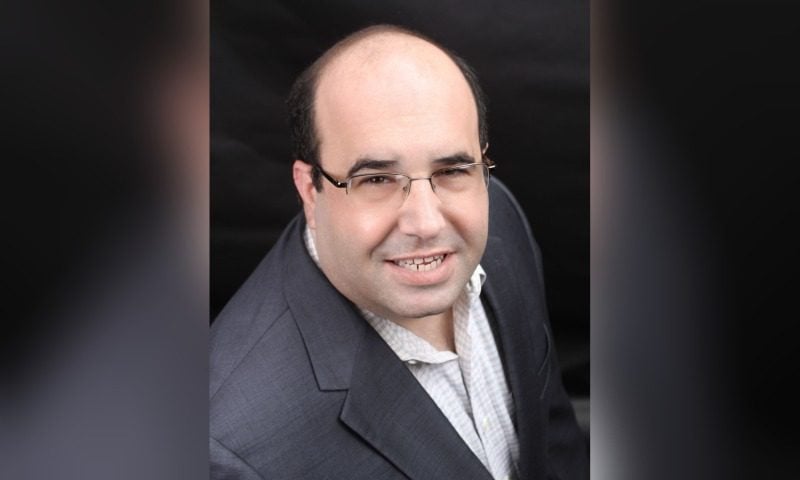Photo by Focus on Sport/Getty Images May they rest in peace. It is time to reflect on the year that was and those we lost. Among those we lost in the baseball world include stars like Tim Wakefield, Tim...
 Photo by Focus on Sport/Getty Images
Photo by Focus on Sport/Getty Images
May they rest in peace.
It is time to reflect on the year that was and those we lost. Among those we lost in the baseball world include stars like Tim Wakefield, Tim McCarver, Ryan Minor, Alex Cole, Willie Hernandez, Jesus Alou, Brooks Robinson, Vic Davalillo, Nate Colbert, Frank Howard, Joe Pepitone, Gary Peters, Mike Shannon, Dick Groat, Eddie Bressoud, Roger Craig, Albie Pearson, and Frank J. Thomas.
Some members of the Royals family also passed away this year, let’s take a moment to remember them.
Vida Blue
Blue was a left-handed prodigy from Louisiana who was in the big leagues by age 19. By age 21 he was an MVP and Cy Young winner with the Oakland A’s, posting one of the best pitching lines in recent history in 1971 - 24 wins and a 1.82 ERA with 301 strikeouts in 312 innings. He publicly sparred with owner Charlie Finley over money, at one point threatening to retire to work for a steel company. He won 20 games three times with the A’s before they traded him across the Bay to the Giants in 1978. In four seasons with San Francisco he would make three All-Star appearances.
The Royals sought to add another veteran to their starting pitching rotation in 1982, so they acquired Blue from the Giants for infielder Brad Wellman and pitchers Atlee Hammaker, Renie Martin, and Craig Chamberlain. Blue was 32 years old at this time, but he still had something left in the tank, going 13-12 with a team-best 3.78 ERA in 181 innings and 2.7 rWAR.
/cdn.vox-cdn.com/uploads/chorus_asset/file/25190395/133215618.jpg)
But his performance quickly declined the next year and he was demoted to the pen after failing to win a game in his first seven starts. The Royals eventually released him in August, but his drug problems resurfaced at the end of the year when he and three other Royals - Martin, first baseman Willie Aikens, and outfielder Willie Wilson - were charged with possession of cocaine. Blue plead guilty and served 81 days in prison, and was suspended for the entire 1984 season by Commissioner Bowie Kuhn.
Blue returned to baseball to pitch for San Francisco for two more seasons before retiring in 1986 at the age of 36. He retired with 209 career wins and 2,175 strikeouts. After his career, he briefly played in the Senior Professional Baseball Association, worked as a TV analyst for the Giants, and gave talks on his battles with substance abuse. Blue died in May at the age of 73.
Dick Drago
Drago was a member of the inaugural Royals team in 1969 and was their first ace pitcher. He signed with the Detroit Tigers, but was unable to crack their championship-winning roster. The Royals selected him in the expansion draft, and after a brief stint in the bullpen, he was in the rotation serving as a workhorse, tying a team-high ten complete games.
/cdn.vox-cdn.com/uploads/chorus_asset/file/16294964/drago.jpg)
He put together his best season in 1971, winning a then-club record 17 games with a 2.98 ERA and a team-high 241 1?3 innings with 15 complete games, earning some Cy Young award votes. He posted very low strikeout numbers - even for that era - but found success by throwing strikes and getting groundballs. He went just 12-17 the next year, but with a 3.07 ERA amid poor run support. Drago would win 12 games for the Royals in 1973 as the Royals flirted with contention, but he clashed with manager Jack McKeon. “Trader Jack” would ship him to Boston after the season for pitcher Marty Pattin.
Drago was a swingman in two seasons for the Red Sox, pitching in the 1975 World Series. After that he would bounce around to the Angels, Orioles, Red Sox again, before finishing his career with the Mariners in 1981. He won 108 games in the big leagues and completed 62 of his 189 starts. He is still in the top ten in Royals history in innings pitched, complete games, and career ERA, finishing his KC career with a record of 61-70 with a 3.52 ERA and 13.5 rWAR.
Drago spent his post-playing career in sales and marketing, enjoying bowling and golfing in Massachusetts, and later Florida. Drago died in November at the age of 78.
Dave Frost
Frost was a right-handed starting pitcher who played six years in the big leagues with the White Sox, Angels, and Royals. The White Sox drafted him out of Stanford where he also played basketball. After one year in the South Side, he was dealt in six-player trade with Brian Downing to the Angels for a package that included Bobby Bonds and Rich Dotson.
The Southern California native was called up to the rotation in the second half of 1978 and pitched well, giving him a shot at the 1979 rotation. He excelled with 16 wins and a team-high 239 1?3 innings pitched for an Angels rotation that featured Nolan Ryan and Frank Tanana. The Angels won their first division in club history that year and Frost started Game 2 of the ALCS against the Orioles, although he left in the second inning.
Frost battled back and elbow injuries the next few years and departed the Angels as a free agent, signing with the Royals for the 1982 season. He began in the bullpen and pitched well, but struggled when he was elevated to the rotation. He finished 6-6 but with a 5.51 ERA in 14 starts and 7 relief appearances, and the Royals released him after the season. Frost finished his big league career with 33 wins. He retired to Southern California and participated in anti-drug programs with the Angels. He died in April at the age of 70.
Don Hood
Hood was a lefty swingman who enjoyed a ten-year career with the Orioles, Indians, Yankees, and Cardinals before finishing his career with the Royals in 1982 and 1983. He was drafted in the first round of the draft by Baltimore out of high school in South Carolina and joined a loaded Orioles pitching staff in 1973. Unable to break into their rotation, he was traded to Cleveland in 1975, where he spent four of his most productive seasons.
The Yankees acquired Hood in the middle of the 1979 season for Cliff Johnson, and after the year, the lefty was one of the first players granted free agent rights. He signed with the Cardinals, but appeared in just 33 games and was released at the end of the year. The Royals signed him on a minor league deal and he spent all of 1981 pitching in Omaha.
Hood made the big league team in 1982 and spent that year and the next as the last man in the bullpen. But he pitched well when called upon, posting a 2.99 ERA in 57 appearances over those two seasons. He had an altercation on the team bus with manager Dick Howser, which may have hurt his career. He was waived in spring training in 1984 and never played again. He finished his big league career with 34 wins and a 3.79 ERA in 848 1/3 innings.
Hood moved to Florida and pitched briefly in the Senior Professional Baseball Association. He became a park ranger after his playing career, and died in June at the age of 73.
Ted Savage
Savage was an outfielder who grew up in the St. Louis area, attending nearby Lincoln College where he played basketball. He served a three-year stint in the Army where he played baseball, and after playing on some sandlot teams after his discharge, he was signed by the Philadelphia Phillies. He made his big league debut in 1962 at the age of 26, and had a solid rookie year hitting .266/.345/.373 in 387 plate appearances, but found playing time scarce the next few years as he bounced around from the Phillies to the Pirates to his hometown Cardinals.
The dismal Cubs purchased him in 1967 and he got an extended look but did not impress. He moved on to the Dodgers and Reds before joining the Brewers in 1970, their first year in Milwaukee. Savage enjoyed the best season of his career at the age of 34, hitting .279/.402/.482 with 12 home runs in 343 plate appearances. But the Brewers wanted a youth movement, and traded him in May of 1971 to the Royals for infielder Tommy Matchick. Savage filled in for an injured Lou Piniella, but after just 19 games he broke his own hand, ending his season. He would play in the minors and in Mexico after that that, but never again in the big leagues.
After his playing career, he went into education, eventually becoming athletic director at Harris-Stowe State College. He later worked for the Cardinals, serving as a minor league outfield instructor, and working in the front office in community relations. He eventually became director of marketing and helped develop the RBI program in St. Louis. He died in January at the age of 86.
Sandy Valdespino
Hilario “Sandy” Valdespino grew up in poverty in Cuba, but excelled in baseball and was signed by the Washington Senators. His first minor league manager thought he looked like Sandy Amoros of the Dodgers, so he was given the nickname “Sandy.” He spent eight long years in the minors, unable to break through the outfield of the big league team, who had relocated to Minnesota as the Twins. He finally made his big league debut in 1965 and served as pinch-hitter on the eventual American League-pennant winners. He went 3-for-11 against Los Angeles in the World Series, getting all three hits of Dodgers Hall of Famers Don Drsydale and Sandy Koufax.
After two more years as a role player with the Twins, Valdespino bounced around from Atlanta to Houston to Seattle, and then to Milwaukee when the Pilots relocated. The Royals purchased him in mid-season of 1971 and sent him to Omaha, reuniting him with manager Jack McKeon, who had managed him in the minors before with the Twins. He was called up when rosters expanded in September and appeared in 18 games with the Royals, hitting .317 with two of his seven career big league home runs. He returned to Omaha for 1972, just 32 days short of MLB pension eligibility, but he would never again play in the big leagues. He later served as a coach in the Yankees organization, and retired to Las Vegas for a time, living of gambling winnings. He died in February at the age of 84.
A number of former Kansas City Athletics also died in 2023:
Sal Bando was a college standout at Arizona State and a four-time All-Star third baseman and starter for the three-time champion Oakland Athletics. He hit 242 career big league home runs in 16 seasons with the Athletics and Brewers, finishing runner up in the 1971 AL MVP race. He spent the first two seasons of his career in Kansas City before the team moved to Oakland.
Mike Baxes was from the Bay Area and played for his local San Francisco Seals until the A’s purchased him. He was a reserve infielder in 1956, but won International League MVP when he was demoted to the minors in 1957. He returned as the Opening Day second baseman for the A’s in 1958, but hit just .212/.286/.264 in 73 games and the A’s traded him to the Yankees the next year.
Carl Duser was a Pennsylvania native who signed with his local Philadelphia Athletics. After a stint in the Army, he resumed his baseball career and was called up late in 1956 to debut for the Kansas City Athletics. He won his first major league start, but was roughed up in his next outing. He would make just one MLB appearance after that, in 1958, before retiring back to Pennsylvania.
Dick Hall spent 16 years in the big leagues as a swingman with 495 games pitched in his career with the Pirates, Athletics, Orioles, and Phillies. He began his career as an outfielder, appearing in 112 games for the Pirates in 1954, but the next year he began to transition to pitching full time. Kansas City acquired him in 1960 for catcher Hal Smith and he went 8-13 for the A’s with a 4.05 ERA and the lowest walk rate in the rotation. After just one year, the A’s moved him on to the Orioles where he flourished as a reliever for four pennant-winning clubs.
Ray Herbert didn’t really get his big league career going until age 28, but he eventually won 104 games in his career with the Tigers, A’s, White Sox, and Phillies. He lost a year early on to military service, then spent two years in the minors after the A’s purchased him from Detroit. He figured things out in 1958 and by 1960 he was their best pitcher with 5.8 WAR and 14 wins with a 3.28 ERA. He was traded the next year to the White Sox in an eight-player deal, and he won 20 games for Chicago in 1962, his only All-Star appearance.
Lou Skizas was an outfielder nicknamed “The Nervous Greek”, who first spent time in Kansas City with the Blues in 1954, the top affiliate of the Yankees. He hit well in the minors, but his defense kept him off the field, and the Bronx Bombers traded him to Kansas City after six games in 1956. He hit .316 in 83 games with the A’s, but just .245 the next season although 18 home runs to just 15 strikeouts. The A’s shipped him to Detroit in a 13-player trade, and he ended his big league career in 1959 with the White Sox.
Ken Suarez represented Team USA in the Olympics in 1964, signed with the Athletics in 1965 and was in the big leagues by the start of the 1966 season. He served as the backup catcher for the A’s for two seasons, hitting .189 in 74 games, but was praised for his defense. He later played for Cleveland and Texas, but sat out the 1974 season after a salary dispute over $8,000, refusing to play even after the Rangers traded him back to Cleveland. Even though he wasn’t playing, Cleveland traded his rights to the Angels to acquire Frank Robinson, so he could serve as their player/manager, but Suarez would never play again.
Dick Tomanek was a lefty who spent parts of four seasons with his hometown Indians before they shipped him in a five-player deal to Kansas City with Roger Maris in exchange for Vic Power. He became Kansas City’s best relief pitcher in 1958 with a 3.61 ERA in 36 outings, but after a poor start the next season, the team demoted him. He retired rather than accept assignment to pitch in Hawaii, and his career ended at the age of 30.
Ron Tompkins debuted with the A’s at age 20 in 1965, pitching in five games with a solid 3.48 ERA. He would be demoted the next year and struggled in the minors the next few years, bouncing around from the Braves to the Reds organizations before being traded to the new Royals organization for pitcher Dave Wickersham. He failed to make the team in 1970, but kept persisting and eventually made it back to the big leagues in 1971 with the Cubs at the age of 26, making 35 appearances as a submariner.















